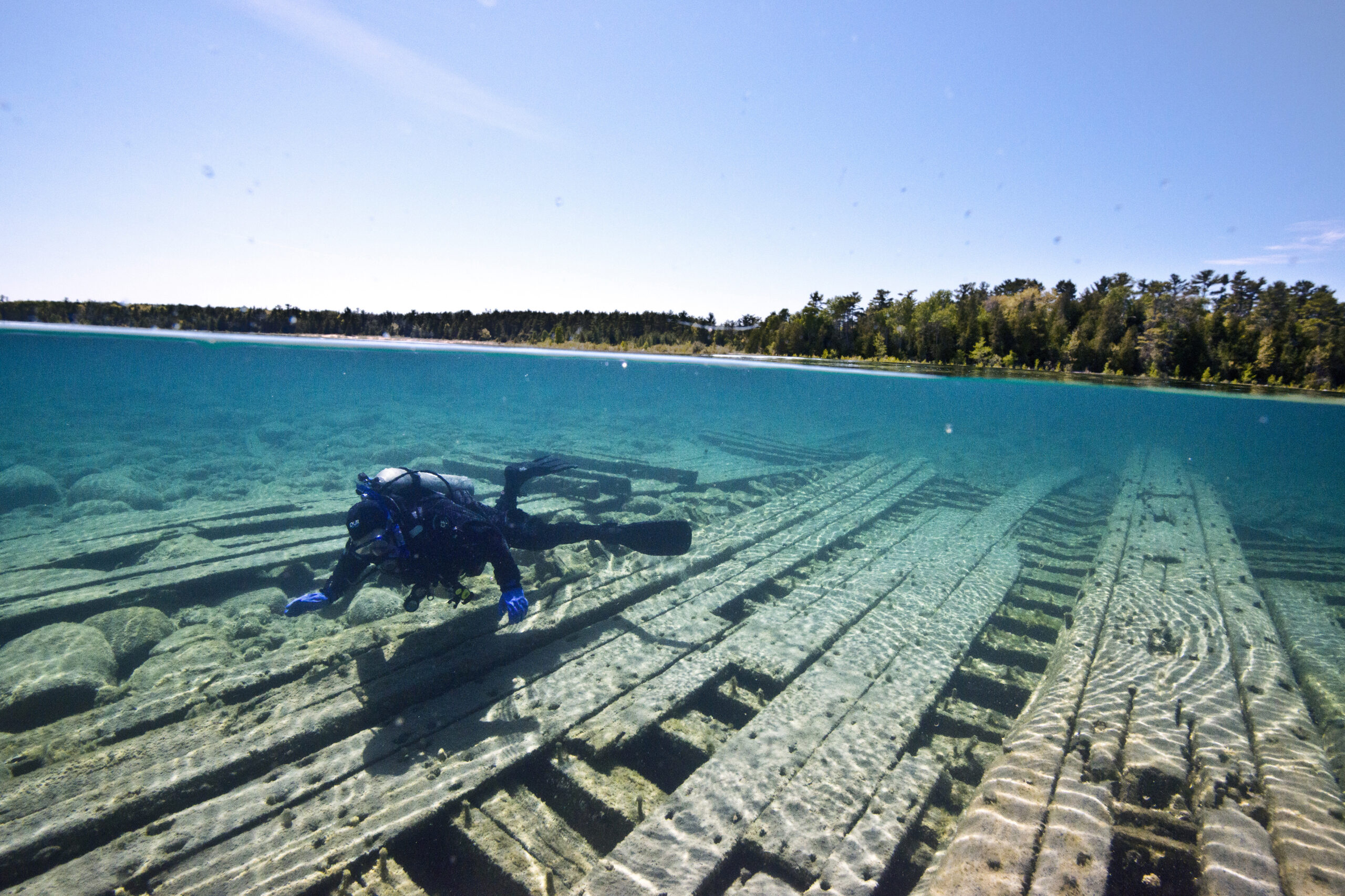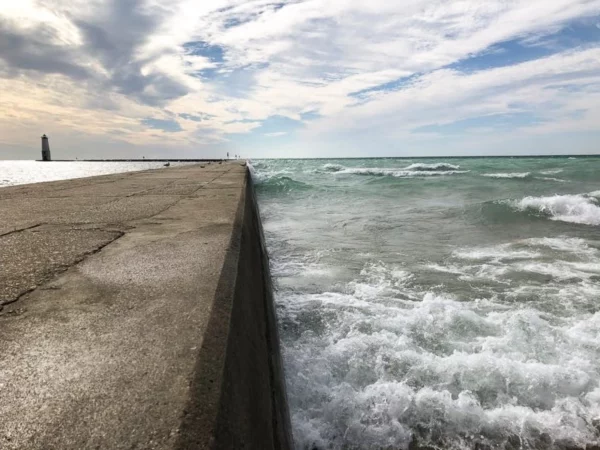
Out of three locations around the world, the Great Lakes region was chosen to host a new Department of Defense study. The Defense POW/MIA Accounting Agency, or DPAA, is actively engaged in the Missing in Action Recovery and Identification Project. Its goal is to locate and repatriate the remains of military personnel in conflict areas to provide closure to their families.
The study used environmental DNA, or eDNA, a revolutionary way to assist in studying life on earth. It allows scientists to uncover hidden aspects of aquatic and terrestrial ecosystems by analyzing genetic material in the environment. Already, eDNA is aiding in conservation efforts for endangered species and holds potential applications in archaeology for historic sites.
Since it’s fairly new for this technology to be used in this way, the DPAA reached out to Kirstin Meyer-Kaiser at Woods Hole Oceanographic Institute, to do a small pilot study. They discovered only a few other locations in the world where this would be tractable, including Italy and Saipan. The Great Lakes were selected to figure out if eDNA could really work for this type of project.
“Thunder Bay National Marine Sanctuary being in Lake Huron is just such a fantastic place to work out of,” Meyer-Kaiser said. “They’ve got all the infrastructure: they’ve got boats, they’ve got divers, and they have all of these shipwrecks, right off shore in a relatively accessible place.”
Meyer-Kaiser explained that temperature determines the rate at which DNA or organic matter degrades. The cold temperatures in the Great Lakes help to preserve evidence of human life on these shipwrecks. The fresh water is important too, because salt accelerates the corrosion of any metal. In the ocean there are mollusks, commonly referred to as shipworms, that bore into the wood and slowly degrade any wooden structure that lands on the seafloor. These are all reasons why the Great Lakes were the perfect place to run this study.
She went on to explain how exactly eDNA works to detect life. She gave the example of a living organism dying the woods, and how large scavengers will show up first. They will do a macroscopic disassembly of the remains, which has a parallel in many parts of the ocean, at certain depths. There are fish, which are scavengers in the ocean, that would do the same thing of removing large pieces of the remains.
Next, there’s physical processes, involving air or water. The wind in the woods would potentially blow away fragments of skin cells, so DNA would spread. In a lake or the ocean, water would perform the same function, potentially carrying away small bits of DNA.
Lastly, in both environments there are microbes. In the woods, it would likely be soil microbes or fungi that would degrade the organism’s flesh, eventually making their way onto bone. In the ocean or a lake, it’s exactly the same function with microbial sediments.
“DNA, like all things that degrade in the environment, is never a binary thing: it’s never there or it isn’t, it’s just less there over time,” Meyer-Kaiser said. “There’s an entire field of ancient DNA where people are extracting DNA from Neanderthals and fossilized penguins, and things that are astronomically old. It’s going to take a really long time for 100 percent of DNA from a particular organism to be gone. It’s a matter of adjusting the methodology of the research objectives. If you’ve got something 200-years-old, then you’ll probably need to collect just a little more material to extract the DNA in order to find a detectable signal, than if you were working on something 60-years-old.”
During her team’s time in Thunder Bay, they took two kinds of samples from each of the three shipwrecks, about ten samples from the water and fifteen from sediments at different distances around the ships. Remote operated vehicles were an option, but divers were preferred given they are much more dexterous. Stephanie Gandulla, is a maritime archeologist at Thunder Bay, who assisted on this project. She was one of the scientific support divers, who stayed on the water to aid the technical divers who were collecting samples 200-feet down.
“One of the benefits of having so many different shipwreck sites to choose from, they selected three different sites that had different loss of life,” Gandulla said. “One had no loss of life, one had a few tragic losses, and then one had a lot of loss of life.”
Gandulla said there are 100 shipwreck sites that have been located in Thunder Bay, and that there are least 100 more that still need to be located. It was the first freshwater National Marine Sanctuary, designated in the year 2000. Part of what makes the site so unique is its wide collection of wrecks: schooners, steamers, freighters, paddle wheelers, wooden vessels, steel vessels, and shipwrecks at five feet of water or in hundreds of feet of water. It is one of the richest collections in the Great Lakes, if not in the world, according to Gandulla, because this collection has great preservation due to the cold freshwater.
This project with the DPAA is still ongoing, they’ve finished gathering samples in the field and are now working in the lab. Meyer-Kaiser said she hopes this study will help develop a set of best practices in this emerging field. That these standard procedures will become more integrated, so that archeological or biological investigations anywhere in the world can benefit from this form of research.
Catch more news at Great Lakes Now:
Behind the shipwreck discovered in Lake Michigan
Mapping the Great Lakes: Underwater discoveries await
Featured image: A diver views the wreckage of the wooden schooner Portland, one of the most accessible shipwrecks in Thunder Bay National Marine Sanctuary. Photo: Tane Casserley/NOAA.




